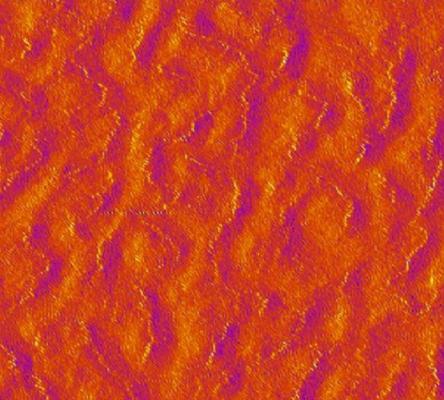
A team of researchers says that we can use graphene crinkles as ‘molecular zippers.’ About ten years ago, scientists noticed something very odd happening when they dumped buckyballs on a certain type of multilayer graphene, a flat carbon nanomaterial. Buckyballs are carbon molecules that have a soccer ball shape.
The buckyballs did not roll around randomly like marbles do on a smooth surface. Instead, they assembled spontaneously into single-file chains that stretched across the whole graphene surface.
Researchers from the School of Engineering at Brown University have explained how this phenomenon works. They wrote about their study and findings in the prestigious journal Proceedings of the Royal Society A (citation below). The authors were Mrityunjay Kothari, Moon-Hyun Cha, Victor Lefevre, and Kyung-Suk Kim.
The authors showed that minuscule, electrically-charged crinkles in the graphene sheets interact with the molecules on the surface. They arrange those molecules in electric fields that exist along the paths of the crinkles.
Graphene crinkles create ‘molecular zippers’
Senior author, Kyung-Suk Kim, Director of the Center for Advanced Materials Research in Brown’s Institute for Molecular and Nanoscale Innovation, said:
“What we show is that crinkles can be used to create ‘molecular zippers’ that can hold molecules onto a graphene surface in linear arrays.”
“This linear arrangement is something that people in physics and chemistry really want because it makes molecules much easier to manipulate and study.”
Earlier research
The new article in the journal is a follow-up to earlier research that Prof. Kim’s team had carried out. They had previously described how sheets of layered graphene deformed if they gently squeezed them from the side.
They did not form gently-sloping wrinkles like those we might find in a scrunched-up rug. Rather, the compressed graphene formed pointy saw-tooth crinkles across their surface.
The researchers showed that they formed because of the arrangement of electrons in the graphene lattice. The arrangement caused the wrinkle’s curvature to localize along a sharp line.
Graphene crinkles electrically polarized
The graphene crinkles are electrically polarized, with crinkle valleys and peaks carrying positive and negative charges respectively.
Prof. Kim and colleagues thought the strange behavior of the buckyballs might be due to the electrical charges along the crinkles. The multilayer graphene they used in the original buckyball experiments was HOPG. HOPG (highly oriented pyrolytic graphite) forms crinkles naturally when it is produced.
However, the researchers needed compelling proof that the charges that the graphene crinkles created could interact with the buckyballs on the surface. According to this new paper, they managed to provide compelling proof.
Their analysis predicted that positively charged crinkle valleys should create an electrical polarization in the otherwise electrically neutral buckyballs. That electrical polarization should make the buckyballs line up, two nanometers apart. Each buckyball should also line up in the same orientation relative to each other. A nanometer is one-billionth of a meter (10-9 m).
Molecular zippering may have a promising future
According to Prof. Kim, the molecular zippering capability of graphene crinkles could have many potential applications. It could be useful for researchers who are studying biomolecules like RNA and DNA.
If, for example, we stretched out DNA molecules linearly, we could sequence them faster and more easily. Prof. Kim and his team are currently trying to find out whether this is possible.
Graphene
Graphene has some amazing qualities. It is the lightest, thinnest, and strongest material in the world. It is two hundred times tougher than our strongest steel.
Graphene is also the best electricity and heat conductor we know of. It consists of a single layer of pure carbon atoms in a honeycomb, hexagonal lattice arrangement.
Scientists say that it is so thin that they consider it to be a two-dimensional object.
Citation
“Critical curvature localization in graphene. II. Non-local flexoelectricity–dielectricity coupling,” Mrityunjay Kothari, Moon-Hyun Cha, Victor Lefevre, and Kyung-Suk Kim. Proceedings of the Royal Society A. Published: 30 January 2019. DOI: https://doi.org/10.1098/rspa.2018.0671. Print ISSN:1364-5021. Online ISSN:1471-2946.
